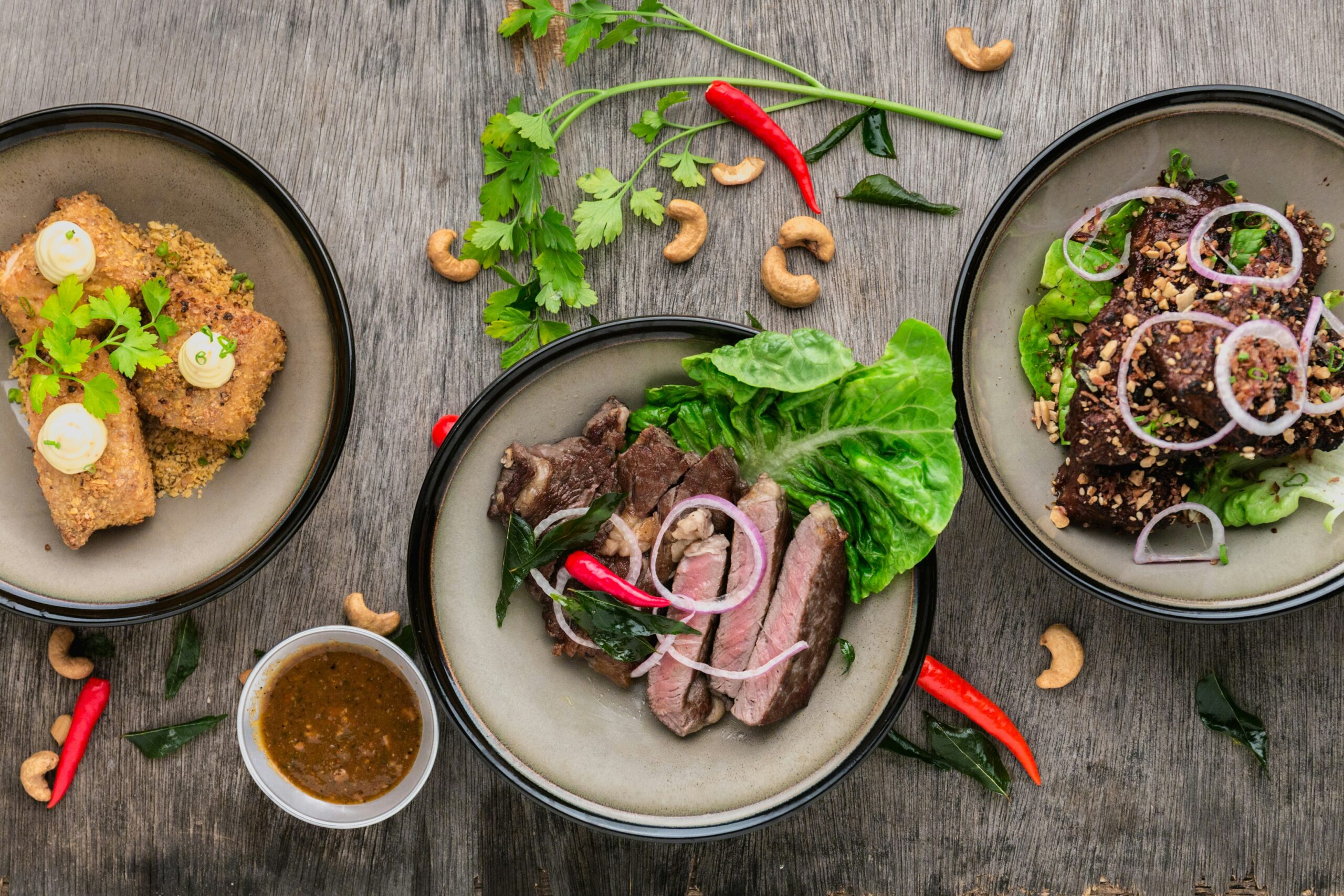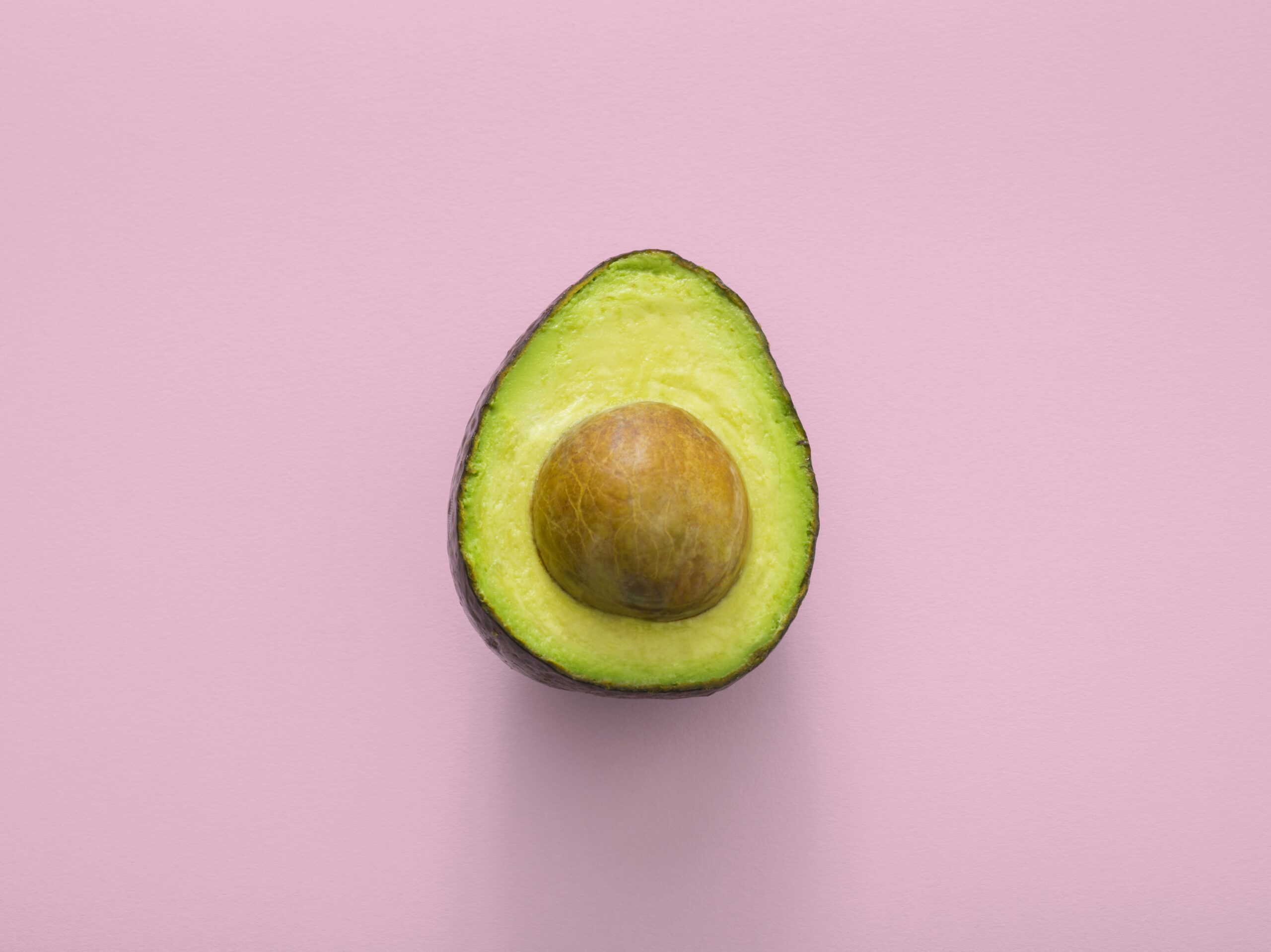Imagine yourself sitting down to a hearty meal in New Orleans, with the tantalizing aromas of spices wafting through the air. As you take a bite of the rich, flavorful gumbo or the savory jambalaya, you can’t help but wonder – are these iconic dishes truly representative of Southern cuisine? In this article, we’ll explore the origins and ingredients of gumbo and jambalaya, shedding light on whether these beloved dishes can rightfully be considered Southern delights.
Understanding Southern Cuisine
Overview of Southern cuisine
Southern cuisine refers to the culinary traditions and dishes that have evolved in the Southern regions of the United States. This vibrant and diverse cuisine is heavily influenced by African, Native American, European, and Caribbean cuisines. Known for its bold flavors, hearty ingredients, and comforting dishes, Southern cuisine is deeply rooted in the heritage and culture of the South.
Key characteristics and ingredients commonly used in Southern dishes
Southern cuisine is characterized by its use of rich and flavorful ingredients such as corn, okra, tomatoes, sweet potatoes, collard greens, and various meat cuts like pork, chicken, and seafood. The cuisine often features slow-cooked dishes and incorporates a variety of spices and seasonings, such as cayenne pepper, paprika, and bay leaves, to add depth and complexity to the flavors. In addition, Southern dishes often include staple ingredients like cornmeal, buttermilk, and butter, which contribute to the unique texture and taste of the cuisine.
Regional variations in Southern cuisine
While there are overarching themes and ingredients in Southern cuisine, it’s important to note that there are also distinct regional variations within the South. For example, the coastal regions of the South heavily utilize seafood in their dishes, while the inland regions favor ingredients like pork and greens. Each region brings its own twist to traditional Southern recipes, resulting in a diverse culinary landscape that reflects the unique history and culture of the area.
Introduction to Gumbo
Origin and history of Gumbo
Gumbo is a beloved dish that originated in Louisiana and has become synonymous with Southern cuisine. Its history can be traced back to West African, French, and Spanish influences that have shaped the culinary traditions of the region. The word “gumbo” is derived from the West African word for okra, which is one of the key ingredients in the dish. Over time, Gumbo has evolved to incorporate various ingredients and cooking techniques, reflecting the multicultural heritage of Louisiana.
Key ingredients and cooking process
Gumbo is a flavorful stew that typically includes a combination of protein such as chicken, sausage, or seafood, along with a combination of vegetables like onions, bell peppers, celery, and of course, okra. The dish is thickened with a roux, which is a mixture of flour and fat, and is often seasoned with a blend of spices and herbs like thyme, bay leaves, and Cajun seasoning. Gumbo is traditionally cooked low and slow, allowing the flavors to meld together and develop a rich and complex taste.
Variations of Gumbo across regions
Given the diverse culinary influences in the South, it’s no surprise that there are variations of Gumbo across different regions. For example, New Orleans is known for its Creole-style Gumbo, which typically includes a mix of seafood like shrimp, crab, and oysters. On the other hand, gumbo variations from other parts of Louisiana may feature ingredients like duck, alligator, or even rabbit. Each variation showcases the unique flavors and ingredients of the region, while still staying true to the essence of Gumbo.

Gumbo as a Southern Dish
Gumbo’s link to Southern cuisine
Gumbo plays a significant role in Southern cuisine, representing the diverse blend of cultures and flavors that have shaped the region. It serves as a delicious embodiment of the culinary heritage that defines Southern cooking. The combination of traditional African ingredients, French culinary techniques, and Spanish influences makes Gumbo a true reflection of the multicultural tapestry of the South.
Role of Gumbo in Southern culture and rituals
Gumbo holds a special place in Southern culture and is often associated with gatherings and celebrations. Whether it’s a family reunion, a holiday feast, or a community event, Gumbo brings people together to share a flavorful and comforting meal. It is a dish that fosters a sense of community and tradition, allowing generations to connect over the shared experience of enjoying a warm bowl of Gumbo.
Regions in the South where Gumbo is popular
While Gumbo is popular throughout the South, it is particularly celebrated in Louisiana, where it is considered a culinary icon. New Orleans, in particular, is known for its rich Gumbo traditions, with numerous restaurants and eateries serving up their own unique takes on the dish. Gumbo also enjoys popularity in other Gulf Coast states like Mississippi and Alabama, where the proximity to the ocean allows for the freshest seafood to be incorporated into the recipe.
Introduction to Jambalaya
Origin and history of Jambalaya
Similar to Gumbo, Jambalaya has deep roots in Louisiana and is another iconic dish of Southern cuisine. It is believed to have originated from the cultural fusion of Spanish paella and African jollof rice. As Spanish colonizers settled in Louisiana, they brought their traditional rice dishes, which then evolved with the addition of local ingredients and cooking techniques to create the flavorful Jambalaya we know today.
Key ingredients and cooking process
Jambalaya is a one-pot rice dish that typically consists of a protein, such as chicken, sausage, or shrimp, combined with vegetables like onions, bell peppers, and celery. The dish is seasoned with a blend of spices, including cayenne pepper, paprika, and thyme, to give it a distinctive flavor. The cooking process involves sautéing the ingredients together before adding stock and rice, allowing the flavors to meld as the rice cooks and absorbs the delicious broth.
Variations of Jambalaya across regions
As with any beloved Southern dish, there are regional variations of Jambalaya that showcase the culinary diversity within the South. For example, Creole Jambalaya, as popularized in New Orleans, often includes tomatoes, giving it a slightly reddish hue. On the other hand, Cajun Jambalaya, which originates from rural Louisiana, omits the tomatoes and focuses more on the smoky flavors from the meat and spices. These variations highlight the diverse approaches to Jambalaya, while still remaining true to the essence of the dish.

Jambalaya as a Southern Dish
Identifying the association of Jambalaya with Southern cuisine
Jambalaya is undeniably intertwined with the fabric of Southern cuisine. It represents the melding of cultures and flavors that define the region’s culinary heritage. As a dish that combines Spanish, African, and local influences, Jambalaya showcases the diversity and cross-cultural exchange that has shaped Southern cooking.
Influence of Jambalaya on Southern culture and rituals
Jambalaya holds a special place in Southern culture and is often a centerpiece of gatherings and celebrations. It is a dish that embodies the spirit of hospitality and abundance that is synonymous with Southern hospitality. Whether it’s served at a crawfish boil, a tailgate party, or a family reunion, Jambalaya brings people together and is a source of pride for the Southern community.
Jambalaya’s popularity in different Southern regions
While Jambalaya is beloved throughout the South, it enjoys particular popularity in Louisiana, where it is considered a staple dish. New Orleans, in particular, is known for its vibrant Jambalaya scene, with countless restaurants and chefs putting their own unique spin on the classic recipe. Jambalaya is also popular in other Gulf Coast states like Mississippi, Alabama, and Texas, where it is cherished for its bold flavors and comforting nature.
Comparing Gumbo and Jambalaya
Similarities and differences between Gumbo and Jambalaya
Gumbo and Jambalaya, although both iconic Southern dishes, have distinct characteristics that set them apart. The primary difference lies in their consistency and base ingredients. Gumbo is a thick stew with a rich roux-based broth, while Jambalaya is a rice-based dish with a drier consistency. Additionally, Gumbo typically incorporates okra for its thickening properties, whereas Jambalaya relies on a flavorful combination of rice and stock.
Despite their differences, both dishes share similarities in their use of flavorful proteins like sausages and seafood, as well as a blend of aromatic vegetables and spices. Both Gumbo and Jambalaya showcase the eclectic culinary influences of the South and are renowned for their bold and comforting flavors.
Understanding the cultural significance of both dishes
Gumbo and Jambalaya are not only delicious culinary creations but also hold cultural significance in the South. They represent the melting pot of cultures and flavors that define Southern cuisine. These dishes symbolize the sense of community, hospitality, and celebration deeply rooted in Southern culture. Whether enjoyed in a family gathering or at a festive event, Gumbo and Jambalaya bring people together, fostering a shared experience that celebrates the richness of Southern heritage.
Preferences across different parts of the South
While Gumbo and Jambalaya are enjoyed throughout the South, there are regional preferences and variations in each dish. In Louisiana, Gumbo is an integral part of the culinary scene, with different regions showcasing their unique interpretations of the dish. Jambalaya, on the other hand, is popular across the Gulf Coast, from Louisiana to Texas, where each region adds its own twist to the dish.
These preferences may be influenced by factors such as local ingredients, cultural heritage, and historical influences. Nonetheless, both Gumbo and Jambalaya remain beloved Southern dishes, cherished by locals and visitors alike.

Impact of Gumbo and Jambalaya on Southern Cuisine
Role of Gumbo and Jambalaya in shaping Southern cuisine
Gumbo and Jambalaya have played a significant role in shaping Southern cuisine. These dishes are a culmination of the diverse culinary traditions that have come together in the South, blending African, French, Spanish, and Native American influences. As iconic dishes, Gumbo and Jambalaya have become ambassadors for Southern cuisine, showcasing its flavors, history, and cultural heritage to a wider audience.
Influence of these dishes on other Southern meals
Gumbo and Jambalaya have had a profound influence on other Southern dishes, serving as a source of inspiration and creativity for chefs and home cooks alike. The flavors and techniques used in Gumbo and Jambalaya have found their way into countless other recipes, adding depth and complexity to Southern cuisine. From gumbo-inspired soups and stews to jambalaya-inspired rice dishes, these dishes have left their mark on the culinary landscape of the South.
How Gumbo and Jambalaya contribute to the recognition of Southern cuisine
Gumbo and Jambalaya have become synonymous with Southern cuisine and have played a significant role in elevating the recognition and appreciation of Southern culinary traditions. These dishes have garnered attention on national and international platforms, shining a spotlight on the diverse and vibrant flavors found in the South. As people around the world savor the flavors of Gumbo and Jambalaya, they are introduced to the rich tapestry of Southern cuisine, creating a greater awareness and interest in the culinary treasures that the South has to offer.
Gumbo and Jambalaya beyond the South
Popularity and adaptation of these dishes in other parts of America and globally
Gumbo and Jambalaya have transcended regional boundaries and gained popularity both within the United States and across the globe. These dishes have found their way onto menus in restaurants outside of the South, as chefs and food enthusiasts recognize their distinct flavors and cultural significance. Whether it’s a Jambalaya served in a bustling New York City eatery or a Gumbo featured on an international cooking show, these dishes continue to captivate and delight palates worldwide.
Impact on the international perception of Southern cuisine
The international recognition and appreciation of Gumbo and Jambalaya have undoubtedly contributed to a broader perception and understanding of Southern cuisine. These dishes represent just a glimpse into the rich tapestry of flavors and culinary traditions that define the South. As people from different cultures and backgrounds indulge in Gumbo and Jambalaya, they begin to associate Southern cuisine with warmth, hospitality, and a tantalizing array of flavors, further cementing its reputation on the global food stage.
Modern Takes on Gumbo and Jambalaya
Contemporary variations and recipes of Gumbo and Jambalaya
As culinary trends and tastes evolve, so do the recipes for Gumbo and Jambalaya. Modern takes on these classic dishes may incorporate unique ingredients, innovative techniques, or unexpected flavor combinations. Chefs and home cooks alike experiment with adding their own personal twist to Gumbo and Jambalaya, resulting in a plethora of exciting variations that pay homage to the traditional roots while embracing modern creativity.
Impact of food trends on traditional recipes
Food trends can have a significant impact on traditional Gumbo and Jambalaya recipes. As people become more health-conscious or adopt specific dietary preferences, such as vegan or gluten-free, there is a need for adaptations to cater to these preferences. This might involve substituting ingredients or modifying cooking techniques to create healthier or alternative versions of Gumbo and Jambalaya.
How these changes are perceived in the South
In a region where tradition and heritage play a vital role, changes to traditional recipes can evoke mixed reactions. While some individuals embrace the evolution and applaud the creativity of contemporary variations, others may value the authenticity and traditional aspects of Gumbo and Jambalaya. However, it is important to recognize that food is a reflection of the times and evolves with the changing tastes and preferences of the community. Ultimately, the acceptance and perception of these changes in the South may vary among individuals and generations.
Preserving the Legacy of Gumbo and Jambalaya
Importance of maintaining traditional Southern recipes
Preserving the legacy of Gumbo and Jambalaya is crucial to ensuring that Southern culinary traditions continue to thrive. Traditional recipes hold historical and cultural significance, providing a connection to the past and a celebration of the diverse cultural influences that have shaped Southern cuisine. By honoring and preserving these recipes, future generations can appreciate and carry forward the culinary heritage of the South.
Initiatives for preserving the authenticity of these dishes
Many individuals, organizations, and institutions are working diligently to preserve the authenticity of Gumbo and Jambalaya. They document and share traditional recipes, organize festivals and events that celebrate these dishes, and provide education and resources to ensure that future generations have access to the knowledge and skills required to prepare these iconic Southern dishes. These initiatives play a vital role in safeguarding the integrity and cultural legacy of Gumbo and Jambalaya.
Impact on Southern culture and heritage
Gumbo and Jambalaya not only contribute to the culinary landscape but also shape and impact the cultural fabric of the South. These dishes evoke a sense of pride and identity, connecting people to their roots and creating a shared cultural experience. The preservation of Gumbo and Jambalaya ensures that Southern culture and heritage continue to thrive, fostering a deeper appreciation for the traditions and customs that define the region.
In conclusion, Gumbo and Jambalaya are undeniably Southern dishes that represent the rich culinary heritage and cultural diversity of the South. These dishes have become ambassadors for Southern cuisine, leaving an indelible mark both within the region and around the world. As they continue to evolve and adapt to changing tastes and preferences, it is important to maintain a balance between innovation and the preservation of traditional recipes. By preserving the legacy of Gumbo and Jambalaya, we ensure that the vibrant flavors and cultural significance of Southern cuisine are celebrated for generations to come.

